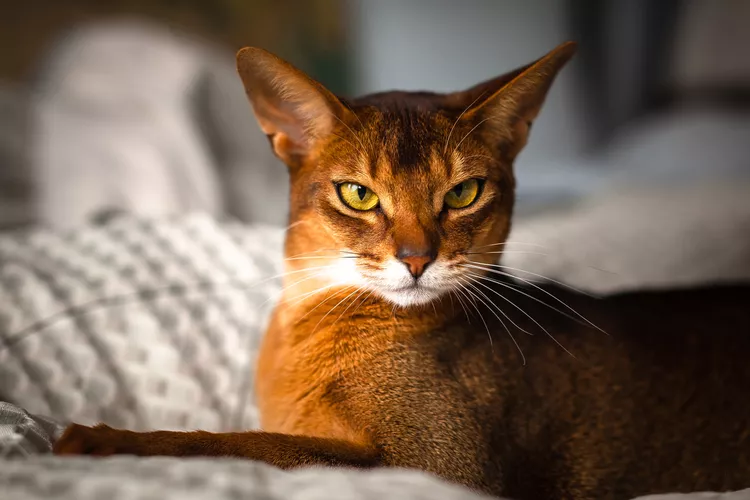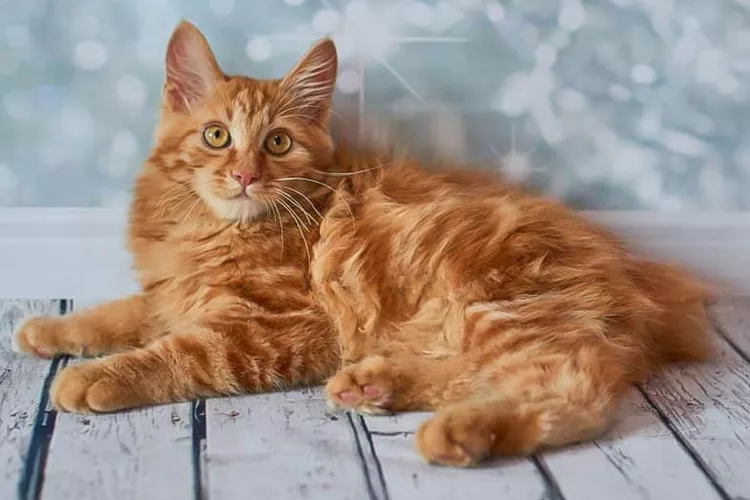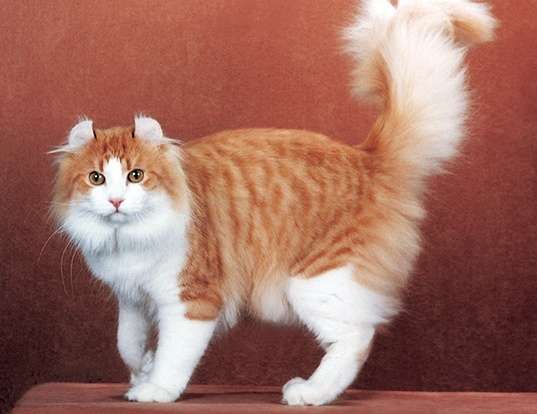
Description
Size: 9-18 lbs
The Norwegian Forest Cat is a huge, robustly built cat with thick fur. It has a hunter’s build and appears to be one now. It has a thick, strong neck and a trapezoidal head. Medium-sized ears and a powerful, yet somewhat rounded, chin is also present. The Norwegian has slightly taller back legs than front legs. The legs have a lot of muscle.
The paws have fur between the toes and appear to be a little large. The Norwegian appears even larger than it is due to the excess fur. The coat is lengthy and dense. When the breed was living in the jungle, this coat offered natural defense. Although they are produced in a variety of tones and patterns, tabby with white is the most popular.

Behavior
Activity Level: Active
Social needs: don’t need company all the times, want some alone time
They don’t need continual attention because they are a laid-back and independent breed. Norwegian Forest Cats will comfortably amuse themselves when left alone and are pleased to simply sit in the same room as their owners.
Origin/History
The Norwegian Forest Cat is a wonderful feline with a lovely, unique tail. The Norwegian breeders started working on making their mystical woodland cat into a breed that would be recognized on the show bench with a legend that is as lovely as the breed itself. Before World War II, the Norwegian Forest Cat was first displayed at a cat show in Norway.
Care as a Pet
The Norwegian forest cat’s thick coat needs to be thoroughly brushed once a week to prevent mats and tangles. The Norwegian forest cat sheds the majority of its undercoat once a year in the spring in preparation for the summer, when further insulation is not required. During this seasonal transition, shedding can be heavy, so brush more frequently. The Norwegian forest cat sheds infrequently the remainder of the year.
Along with brushing, give your Norwegian Forest Cat a bath every few months, maintain short nails and check and clean the ears weekly.
The full development of Norwegian forest cats occurs around the age of five. Even as adults, they remain animated and playful but do not engage in excessive activity. Norwegian forest cats enjoy playing with interesting toys and are typically game for some playtime—on their terms. Think about putting out a cat tower or tree so they can climb, perch, and scratch. Your cat will particularly like having its tree close to a window so it can happily observe squirrels and birds outdoors.
Nutrition and Diet
Despite having a sturdy build, Norwegian forest cats should never put on weight. The best method to avoid weight-related health problems, such as diabetes, heart disease, and hip dysplasia, which can be exacerbated by excess weight, is to keep your Norwegian forest cat slender.
At least twice every day, give your Norwegian forest cat measured portions of food. Don’t leave food out all day; cats who are free-fed have a tendency to eat more frequently than is necessary, which might result in excessive weight growth. For recommendations on a nutritious diet for your Norwegian forest cat, consult your veterinarian or the breeder.
Grooming needs
An adult cat only needs a general grooming once a week, kittens and old cats may need daily grooming to keep their coats tidy and clear of tangles. When this breed sheds out their lengthier winter coat in the spring, they will shed a lot, and thorough brushing can hasten the process. You can inspect the coat for parasites and any small injuries during a weekly grooming.
Table





